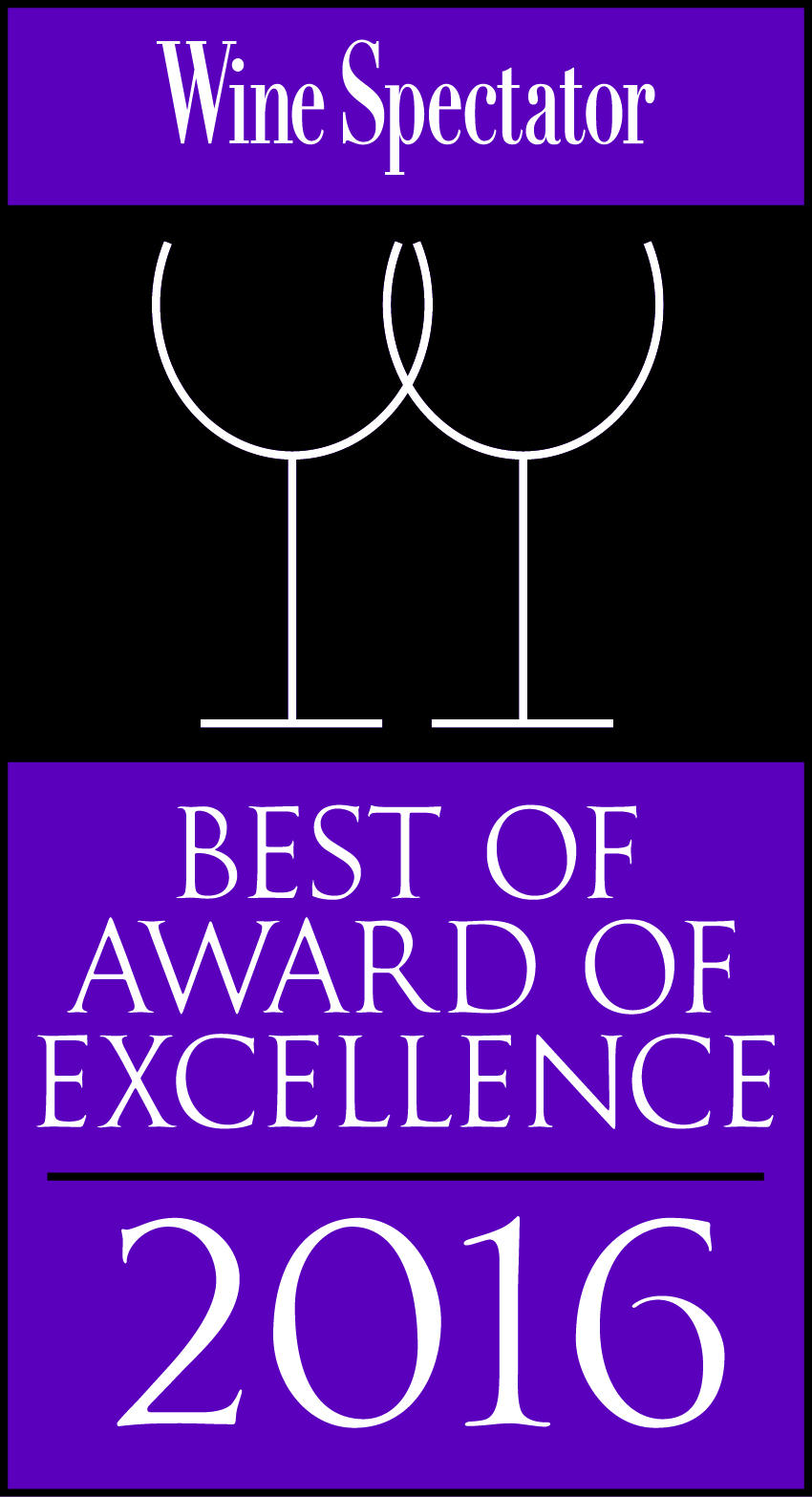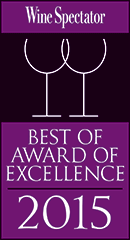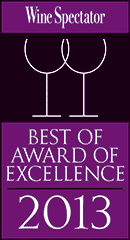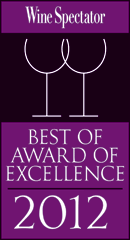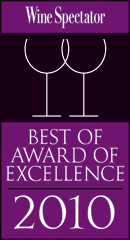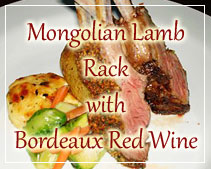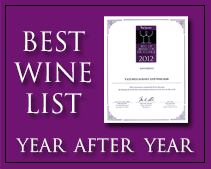Grenache is a tough, woody vine that buds early and, with a long, dry growing season produces high sugar levels that can translate into fleshy, fruity wines of high alcohol. Philippines wine supplier Manila wine shop discusses wine by the grape variety Grenache.
December 14, 2010
Grenache, the Blending Star of Mediterranean Wine
It is uncertain where Grenache originated but it has been around for a long time. From the island of Sardinia, where it is called Cannonau, it may have found its way to Spain and/or southern France during the period when the Moorish kingdom of Aragon ruled the entire area (from about 1250 to 1650 CE). It is well suited to the vast stretches of rocky, windy vineyards along the Mediterranean coast. Grenache is a tough, woody vine that buds early and, with a long, dry growing season produces high sugar levels that can translate into fleshy, fruity wines of high alcohol. The juice is more translucent than dark and often expresses a rustic, peppery charm with more than a hint of sweetness. If the yield of the vineyard is strictly controlled the juice is darker and more concentrated and the result can be a very age-worthy red wine. Grenache also dominates many of the best dry, lively and refreshing rose wines of the Mediterranean world. Its silky texture, hint of fruity sweetness, fleshy mouth feel and spicy acidity make Grenache a good balance in blends that include (or perhaps star) Syrah, Cabernet, Mourvedre or Tempranillo. It’s often a “second fiddle” but Grenache is a very important player.
Most any wine labeled as a Cotes-du-Rhone (CdR) is bound to be mostly or entirely composed of Grenache. The words mean, “the area of the Rhone”, so a Cotes du Rhone wine is one derived from vineyards that are not in any of the other AOC appellations of the Rhone valley, but in the lands around and between these other appellations. There is a small amount of CdR that comes from the northern Rhone valley, containing a higher percentage of the darker more tannic Syrah grape, but most is from the south. You can tell by price how seriously the wine maker takes this wine. Often it is inexpensive and a perfect example of a country wine, light and fruity, for week night sipping.
There are also a class of wines called Cotes-du-Rhone Villages, wines made in the same style but coming from more restricted vineyards round about certain specific villages. Rasteau, Valreas, Sablet and Vaucluse are some names you may see on labels of village Cotes-du-Rhone. These wines follow more rules, attain a higher degree of concentration and are generally a bit more expensive although still reasonably priced.
Gigondas is a village right in the middle of the southern Rhone valley that was elevated from CdR status to be its own appellation in 1971. A Gigondas can’t be more than 80% Grenache, with Syrah and Mourvedre making up most of the remainder. Costing as much or more than a village level CdR, Gigondas can be delightfully untamed and a good value because it follows the same rules in its production as more expensive neighbors. A good Gigondas is rich and expressive with jammy, alluring fruit and dried herb character. The best examples can age and improve for ten years. Vacqueyras is another village that has been raised up from CdR-Villages status. It is next door to Gigondas and the wines are made on a similar pattern so they offer good value and, in some cases, equal quality to Gigondas.
Right down the road from Gigondas are the vineyards of Chateauneuf-du-Pape, (ChndP) the most esteemed if somewhat variable Grenache based wine from France. These words mean “the new house of the Pope”, and refer to the vineyard’s history of supplying wine to the table of the French pope who lived in Avignon during a period in which there were two rival popes. Like all the Grenache wines of this area a Chateauneuf is most often a blend of grape types. Up to thirteen varieties are allowed; Grenache, Syrah, Mourvedre and Cincault are the most notable black grapes and even some white grapes can be used. There are some 100% Grenache ChndP being made as well and there is a small amount of white ChndP made from another collection of up to seven grape types. A white Chateuneuf can be remarkable. White or red, Chateuneuf-du-Pape wines sport a trademark crest of the pope embossed on the bottle and demand high prices but they have more structure and are more powerful and seriously age worthy than their neighbors. But remember, these are not California Cabs or Australian Shiraz. Grenache produces a fundamentally medium bodied wine with spice, zest and a kind of sun-baked, powerful fruitiness.
Tavel and Lirac are two Rhone villages that specialize in Grenache based rose wines that should not be dismissed. These are not sweet, as many wine drinkers with experience of white zinfandel might assume, but resoundingly dry and crisp with charming, ripe fruity flavors that light up a warm summer afternoon.
Near the Spanish border, right on the most south-west edge of France, perched on hillsides overlooking the sea are the vineyards of Banyuls, France’s most complex and intriguing dessert wine. It is both sweet and savory, made from very ripe Grenache grapes that are difficult to harvest from the steep hillsides and are even partly shriveled up and dried by the time they’re picked in October. The resulting wine is powerful, concentrated and heady. A great match to dark, bitter chocolate, Banyuls can also be paired with a savory entree with a touch of sweetness for a real culinary adventure.
Although other grape types are involved in the blend, as is often the case with Grenache wines, you can look for Fitou, Minervois, Collioure and St. Chinian on labels to select other wines from this same area of southwestern France.
In Spain Garnacha plays a role in just about every red wine you can find, although Tempranillo may dominate in many places. Campo de Borja, Jumilla, Cigales, Yecla, Priorat and Valdeorras are some of the DO appellations of Spain that feature Grenache prominently in their blends. There are more acres of vineyard land in Spain than any other country although Spain ranks third or fourth in terms of production. It’s a huge country, with only a couple really world class appellations and yet the overall value of Spanish wine is outstanding. If you’re the kind of person that enjoys wine (especially red wine) on a regular basis you must exploit the bargains of Spain.
If you know where in Spain a red wine comes from you can predict the relative influence of Garnacha in the blend. All the above mentioned Spanish DO appellations are in the south, or near the sea which is Garnacha country. The wines of northern Spain, from places like Rioja or Ribera del Duero especially are Tempranillo based.
There are Spanish wine producers who have not woken up to the revolution and continue to make tired, overly heavy and alcoholic wines. But the new tradition of Spanish wine making combines low yielding vineyards with clean technology in the winery for great results. And, there are many refreshing Spanish white wines coming up in quality these days as well.
Warren Gregory can be reached at warren@warrenswineworld.com Have a wine related question or live in or near the Twin Cities in Minnesota? Plan a wine event. Warren is a certified sommelier and writes professionally and leads classes in wine tasting and knowledge. Visit warrenswineworld.com for more fun information on wine and Warren’s adventures in wine and food
Source: http://ezinearticles.com/?Grenache,-the-Blending-Star-of–Mediterranean-Wine&id=2097216
Are these articles useful for enhancing your wine and dine experience in the Philippines. Do they also help you with travel, leisure, vacation, dining out, nightlife and other leisure activities plans in Manila and other major cities of Philippines? Yats Restaurant hopes to provide you with ample information so you can plan your trips to Pampanga Angeles City Clark Freeport Zone whether you are travelling from Manila or other Asian countries such as Hong Kong, Shanghai, Singapore, Malaysia or Korea.
Restaurant reservations in Manila Philippines, planning of menu, selection of wine for dinner and booking a private function and event in Angeles City Clark Freeport Zone can all be handled. Yats Restaurant and Wine Bar has been regarded by many to be the premier restaurant north of Manila Philippines. Its 3000-line award-winning restaurant wine list has kept many wine lovers happy dining in this restaurant in Angeles City Clark Philippines for over a decade.
Yats Restaurant and Wine Bar was built by Hong Kong-based Yats International in 2000 to provide a world-class cozy fine dining restaurant, business meeting facilities and venues for private dinners and functions in Pampanga Angeles City Clark Freeport Zone. Pampanga Angeles City Clark Philippines was selected for this restaurant because of safety, clean air, absence of traffic and proximity to Manila and Subic.
For comments, inquiries and reservations, email Restaurant@Yats-International.com or call these numbers:
(045) 599-5600 0922-870-5178 0917-520-4401
Http://www.YatsRestaurant.com
Getting to this fine dining restaurant of Angeles City Clark Freeport Zone Pampanga Philippines
How to get to this fine-dining restaurant in Clark Philippines? Once you get to Clark Freeport, go straight until you hit Mimosa. After you enter Mimosa, stay on the left on Mimosa Drive, go past the Holiday Inn and Yats Restaurant (green top, independent 1-storey structure) is on your left. Just past the Yats Restaurant is the London Pub.
The best restaurants in Pampanga can be found in Clark. Restaurants in Angeles City Pampanga offer meals at lower prices and cater to casual dining and budget tourists. Here food and wine lovers enjoy good food and fine wine in restaurants that are as good as the best restaurants in Manila. For wine lovers, a dinner at the famous Yats Restaurant in Clark Pampanga is a good treat. This restaurant offers a restaurant wine list that has no comparison even among the best restaurants in Manila. Many people want to train here in this famous restaurant to become a wine steward or sommelier in the Philippines.
